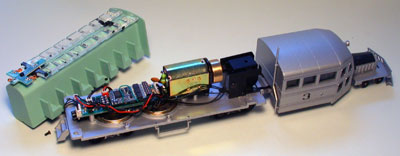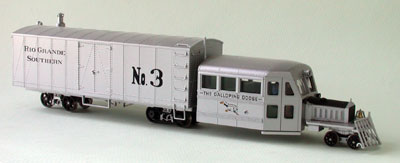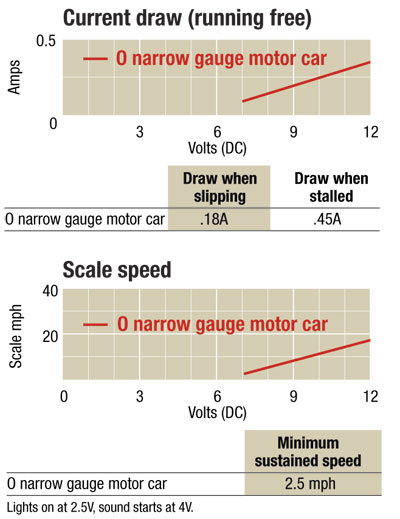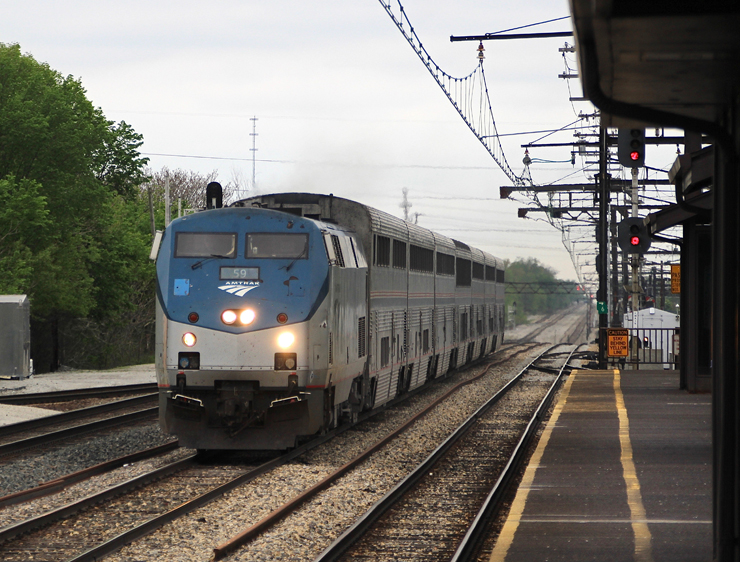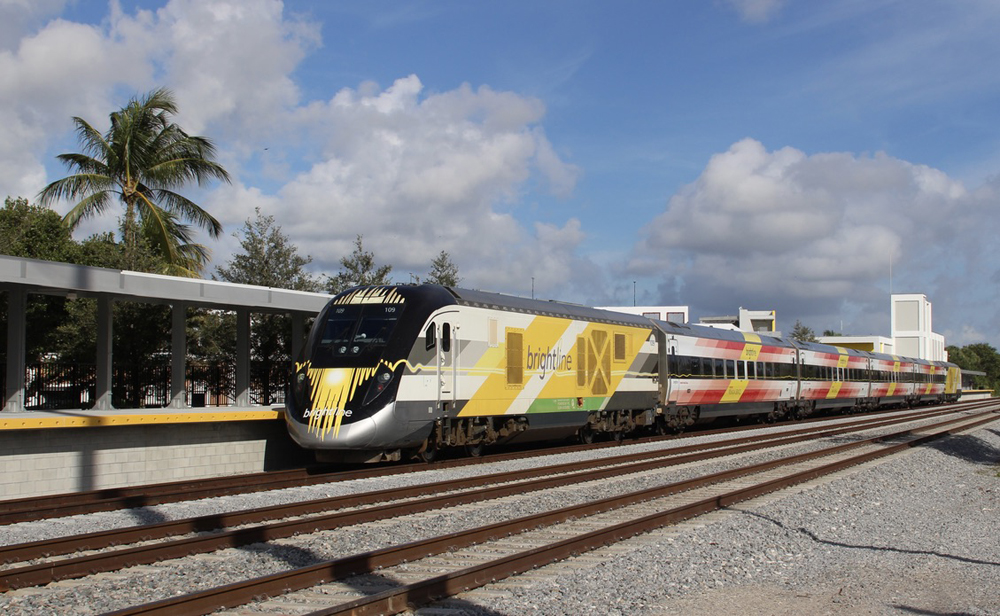Prototype. Precision Craft Models is producing these machines, known affectionately on the Rio Grande Southern as “Galloping Geese.” The nickname allegedly arises out of their waddling gait as they traveled along the track. Both of the models that are available represent RGS Goose no. 3 after the original Pierce-Arrow carbody had been replaced in 1946 with a school bus body, although it retained the original engine hood. Passengers rode the bus while it towed a freight van.
The Geese replaced steam passenger trains on the RGS and also handled almost all the LCL (less-than-carload lot) freight. Originally painted dark green, the Geese were repainted aluminum in 1935, and nos. 3, 4, and 5 received the bus bodies in 1946 along with new engines from GMC. After WWII the LCL service all but disappeared, so the railroad rebuilt the vans with seats to haul tourists.
Rivet patterns are accurately reproduced. Even the tube pilot, while somewhat heavier-looking than that of the prototype, is quite delicate. The only complaint I have is with the deep window recesses on the angled bus doors. Replacing the original glazing with flush-mounted windows would greatly improve the model’s appearance.
The sounds are produced by an ESU LokSound decoder that operates on DC, DCC, and other digital command control systems. The sound is delivered through two 1¼” speakers.
The only downside to sound on straight DC is that you don’t have access to the horn and bell without PCM’s separate sound controller (DC Master $39.99). It takes a little practice with the DC Master to get used to the throttle setting that will bring the Goose to a stop without also shutting off the motor sounds.
On DC, our samples started and ran steadily at 2.5 scale mph, which is certainly slower than a car in gear. The top speed was a breakneck 17.5 mph. On DCC the results were similar, with a top speed of 25 mph. The geese had a 30 mph capability but seldom exceeded 20 mph.
Since the prototypes didn’t haul any cars, I didn’t test the drawbar pull. I did run both models up an 8 percent grade, and they handled it without difficulty. All of the wheels matched the appropriate National Model Railroad Association standards gauges (HO and On3).
Operating manual. A thorough operating manual explains the decoder and sound system functions and includes an exploded drawing of the model. For access to the mechanism, remove the four large screws on the underframe and lift off the freight body. The tourist Goose also has four small screws that secure the interior.
While limited in terms of railroads served, the motor car concept was widespread enough that freelancers should feel comfortable adding a Goose to their layouts.
Prices: Galloping Goose motor cars with sound, $299.99; without sound, $199.99 each
Manufacturer
Precision Craft Models
4 Signal Ave., Suite A
Ormond Beach, FL 32174
www.precisioncraftmodels.com
Description: Plastic and metal ready-to-run narrow gauge motor cars
Road names (all available with or without sound in On2½ or On3 versions):
- Rio Grande Southern nos. 3, 4, and 5 (freight box or passenger bodies)
- Freight or passenger versions painted black or silver, but unlettered
- Passenger versions in fantasy paint schemes: Atchison, Topeka & Santa Fe (red warbonnet), California Western (cream and silver), East Broad Top (dark green), Rio Grande Motor Ways (pink and white), and School bus (yellow and black)
Authentic RGS paint scheme and car numbers
DC/DCC LokSound decoder (also available without sound)
Directional operating lights
Five-pole can motor with flywheel
Minimum radius: 18″
RP-25 contour wheels, in gauge
Separate prototype Goose sounds include the bell, a multitone horn, a single very short horn honk, and a sustained monotone horn
Weight: passenger, 16 ounces; freight, 15½ ounces






